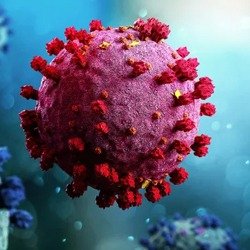Conquering Childhood Asthma: Parental Guide and Tips

Table of Contents
Understanding Childhood Asthma: Causes and Symptoms
Childhood asthma is a chronic respiratory condition that affects millions of children worldwide. It is essential for parents to understand the causes and symptoms of this condition in order to effectively manage their child’s asthma and improve their quality of life.
Causes of Childhood Asthma:
- Genetic Factors: A family history of asthma or allergies increases the likelihood of a child developing asthma.
- Environmental Triggers: Exposure to allergens such as dust mites, pet dander, pollen, mold, or tobacco smoke can trigger asthma symptoms.
- Respiratory Infections: Viral infections, especially those affecting the respiratory system, can worsen asthma symptoms.
- Exposure to Irritants: Air pollution, strong odors, and chemicals can irritate the airways and trigger asthma attacks.
Common Symptoms of Childhood Asthma:
- Wheezing: A whistling sound when breathing out is a common symptom of asthma.
- Coughing: Persistent coughing, especially at night or during physical activity, may indicate asthma.
- Shortness of Breath: Children with asthma may experience difficulty breathing or a feeling of tightness in the chest.
- Chest Tightness: Some children may complain of chest discomfort or pain during an asthma episode.
It is important for parents to closely monitor their child’s symptoms and seek medical attention if they suspect asthma. A healthcare professional can diagnose asthma through a combination of medical history, physical examination, and lung function tests.
Once diagnosed, parents can take several steps to manage their child’s asthma effectively:
- Identify and avoid triggers: Minimizing exposure to allergens and irritants can help prevent asthma attacks.
- Create an asthma action plan: Work with your child’s healthcare provider to develop a personalized plan for managing asthma symptoms and emergencies.
- Administer medication as prescribed: Ensure your child takes their asthma medications regularly and as directed by their doctor.
- Monitor lung function: Regularly measuring your child’s lung function can help assess the effectiveness of their asthma management plan.
- Promote a healthy lifestyle: Encourage regular exercise, a balanced diet, and good sleep to support your child’s overall respiratory health.
By understanding the causes and symptoms of childhood asthma and implementing these management strategies, parents can empower themselves to effectively control their child’s asthma and provide them with a healthy and fulfilling childhood.
Diagnosing Childhood Asthma: Tests and Evaluation
Diagnosing childhood asthma can be a complex process that involves various tests and evaluations. It is crucial for parents to understand these procedures to ensure accurate diagnosis and effective management of their child’s condition. Here are some common tests and evaluations used in diagnosing childhood asthma:
- Physical Examination: The doctor will conduct a physical examination of the child, focusing on the lungs and respiratory system. They will listen to the child’s breathing patterns and check for any wheezing or abnormal sounds.
- Medical History: The doctor will ask about the child’s medical history, including any symptoms they have been experiencing and their frequency. It is important for parents to provide detailed information about the child’s symptoms, triggers, and their impact on daily activities.
- Spirometry: This is a lung function test that measures how much air the child can inhale and exhale and how quickly. It helps to assess the severity of asthma and monitor the child’s response to treatment. In some cases, spirometry may be performed before and after using a bronchodilator to determine if there is an improvement in lung function.
- Allergy Testing: Allergy testing may be recommended to identify specific allergens that trigger asthma symptoms. This can be done through skin prick tests or blood tests. Identifying and avoiding these triggers can help in managing the child’s asthma effectively.
- Exhaled Nitric Oxide Test: This test measures the level of nitric oxide in the child’s breath, which can indicate airway inflammation. Elevated levels of nitric oxide may suggest asthma.
- Chest X-ray or CT Scan: These imaging tests may be ordered to rule out other respiratory conditions or complications and to assess the overall condition of the lungs.
It is important to note that no single test can definitively diagnose childhood asthma. The doctor will evaluate the results of these tests along with the child’s symptoms, medical history, and physical examination findings to make an accurate diagnosis. Parents should actively participate in the diagnostic process, providing all necessary information and asking questions to ensure a thorough evaluation.
Managing Childhood Asthma: Medication and Treatment Options
Childhood asthma can be a challenging condition to manage, but with the right medication and treatment options, it is possible to help your child lead a normal and active life. Here are some essential tips for parents to effectively manage their child’s asthma symptoms and minimize the impact on their daily activities.
- 1. Understand your child’s medication: It is crucial to familiarize yourself with the medication prescribed for your child’s asthma. There are two main types of medications: relievers and preventers. Relievers provide quick relief during an asthma attack, while preventers are used to control and prevent symptoms over the long term. It is important to administer these medications as directed by your child’s healthcare provider.
- 2. Create an asthma action plan: Work with your child’s healthcare provider to create an asthma action plan. This plan will outline the steps to take when your child experiences asthma symptoms or an attack. It should include the medications to be taken, the dosage, and any additional measures to alleviate symptoms, such as using a peak flow meter.
- 3. Educate your child: Teach your child about their condition, including the triggers that can worsen their symptoms, such as allergens or exercise. Help them understand the importance of taking their medications as prescribed and recognizing early signs of an asthma attack. By empowering your child with knowledge, they can actively participate in managing their asthma.
- 4. Minimize exposure to triggers: Identify and minimize your child’s exposure to triggers that can worsen their asthma symptoms. This may include keeping the house clean and free from allergens, such as dust mites or pet dander, avoiding tobacco smoke, and ensuring good indoor air quality. Additionally, it is important to encourage regular exercise while taking necessary precautions to prevent exercise-induced asthma.
- 5. Regular check-ups and monitoring: Schedule regular check-ups with your child’s healthcare provider to monitor their asthma and adjust the treatment plan if necessary. They may recommend periodic lung function tests or allergy tests to assess your child’s condition and make any required modifications to their medication or treatment plan.
Remember, effective management of childhood asthma requires a team effort involving parents, healthcare providers, and the child themselves. By following these tips and staying vigilant, you can help your child conquer childhood asthma and ensure they live a healthy and active life.
Creating an Asthma-Friendly Environment: Tips for Parents
Asthma is a chronic condition that affects millions of children worldwide, and as a parent, it is important to create an environment that minimizes asthma triggers and promotes good respiratory health. Here are some tips to help you create an asthma-friendly environment for your child:
- Keep the air clean: Regularly clean and vacuum your home to remove dust, pet dander, and other allergens. Consider using air purifiers with HEPA filters to further improve air quality.
- Reduce exposure to tobacco smoke: Ensure that your home is smoke-free and avoid exposing your child to secondhand smoke. Encourage family members and visitors to smoke outside the house.
- Control humidity: Keep the humidity level in your home between 30 and 50 percent to prevent the growth of mold and dust mites. Use dehumidifiers and air conditioners to maintain optimal humidity levels.
- Minimize allergens in the bedroom: Use hypoallergenic bedding, cover mattresses and pillows with allergen-proof covers, and wash bedding regularly in hot water to kill dust mites.
- Manage pet allergens: If your child is allergic to pets, consider keeping them out of the bedroom and off furniture. Regularly groom and bathe pets to reduce dander.
- Prevent outdoor triggers: Check air quality forecasts and limit outdoor activities when pollution levels or pollen counts are high. Have your child wear a mask during activities like mowing the lawn or playing in fields.
- Promote good hygiene: Encourage regular handwashing to reduce the spread of respiratory infections. Teach your child to cover their mouth and nose with a tissue or their elbow when coughing or sneezing.
- Stay up-to-date with vaccinations: Ensure that your child’s vaccinations are current, including the annual flu vaccine. This can help prevent respiratory infections that can trigger asthma symptoms.
- Create an emergency action plan: Work with your child’s healthcare provider to develop an asthma action plan that outlines steps to take in case of an asthma attack. Share this plan with teachers, caregivers, and other relevant individuals.
By implementing these tips, you can create a safe and asthma-friendly environment for your child, reducing their risk of asthma attacks and improving their overall quality of life. Remember to consult with your child’s healthcare provider for personalized advice and guidance on managing their asthma.
Empowering Children with Asthma: Teaching Self-Care Strategies
Children with asthma can lead healthy and active lives when they learn how to manage their condition effectively. As a parent, you play a crucial role in empowering your child and teaching them self-care strategies. Here are some essential tips to help your child conquer childhood asthma:
- Education is key: Take the time to educate yourself about asthma and its triggers. This knowledge will enable you to educate your child about their condition and understand how to manage it effectively.
- Open communication: Encourage open communication with your child about their asthma. Make sure they feel comfortable discussing their symptoms, concerns, and any challenges they may face. This will help them feel empowered and supported in managing their condition.
- Medication management: Teach your child the importance of taking their medications as prescribed. Make sure they understand how each medication works and why they need to take it regularly. Create a routine for medication administration to ensure consistency.
- Avoid triggers: Help your child identify and avoid triggers that may worsen their asthma symptoms. Common triggers include allergens, tobacco smoke, pollution, and exercise-induced asthma. Encourage your child to take necessary precautions to minimize exposure to these triggers.
- Self-monitoring: Teach your child how to monitor their asthma symptoms and peak flow readings. Help them understand the significance of peak flow measurements and how to interpret the results. This will enable them to recognize when their asthma is well-controlled or when they may need additional medical attention.
- Emergency action plan: Create an emergency action plan with your child’s healthcare provider. Go over the plan with your child regularly and ensure they understand what steps to take in case of an asthma attack. Make sure they know when to seek immediate medical help.
- Encourage physical activity: Regular exercise is crucial for overall health, including for children with asthma. Help your child find suitable physical activities and sports that they enjoy and can participate in safely. Consult their healthcare provider for any necessary precautions or recommendations.
- Support and encouragement: Lastly, provide your child with constant support and encouragement. Let them know that managing asthma is a team effort and that you are there to support them every step of the way. Celebrate their successes and help them navigate any challenges they may encounter.
Empowering your child with asthma to take control of their condition will not only improve their quality of life but also boost their confidence and self-esteem. By implementing these strategies, you can help your child conquer childhood asthma and thrive.


























